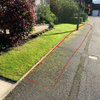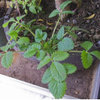What Next? Do I remove all dead weeds after killing them?
jenzebel
14 years ago
Featured Answer
Comments (9)
maifleur01
14 years agoKimmsr
14 years agoRelated Professionals
Carlisle Landscape Architects & Landscape Designers · Jennings Landscape Architects & Landscape Designers · Rancho Palos Verdes Landscape Architects & Landscape Designers · Finneytown Landscape Architects & Landscape Designers · Middletown Landscape Contractors · Williamsburg Landscape Contractors · Brunswick Landscape Contractors · Columbine Landscape Contractors · Costa Mesa Landscape Contractors · Metairie Landscape Contractors · Middletown Landscape Contractors · Midland Landscape Contractors · Old Saybrook Landscape Contractors · Saint George Landscape Contractors · Silver Firs Landscape Contractorsmaifleur01
14 years agojenzebel
14 years agomjmarco
14 years agojenzebel
14 years agoPree S
5 years agogardengal48 (PNW Z8/9)
5 years ago
Related Stories

GARDENING GUIDES5 Ways to Naturally Win the Weed War
Show irksome weeds no mercy with these tricks for combating them sans chemicals
Full Story
EDIBLE GARDENSNatural Ways to Get Rid of Weeds in Your Garden
Use these techniques to help prevent the spread of weeds and to learn about your soil
Full Story
GARDENING GUIDESWhat’s in a Name? See 6 Wildflowers That Aren’t ‘Weeds’ at All
Dispel the stereotypes of weeds and try these wildlife-supporting native wildflowers in your garden
Full Story
GARDENING GUIDES5 Weed-Smothering Ground Covers
Let these landscape plants do the dirty work of choking out weeds while you sit back and enjoy the view
Full Story
SMALL KITCHENSThe 100-Square-Foot Kitchen: No More Dead Ends
Removing an angled peninsula and creating a slim island provide better traffic flow and a more airy layout
Full Story
HOUSEPLANTS8 Houseplants You Can't Kill
They're forgiving and let you forget. Houseplants don't get any easier than this
Full Story
MOST POPULARThe Perfect Houseplant for People Who Kill Houseplants
If you can fill a jar with water, you can keep golden pothos vine happy — and it will pay you back with cleaner air and a greener home
Full Story
GARDENING GUIDESTackle Weeds the Natural Way
Instead of dousing your yard with chemicals to wipe out weeds, let time and nature work their magic via smothering and solarization
Full Story
GARDENING GUIDESLet's Weed Out 4 Native Plant Myths
Plant wisely for a garden that supports pollinators and requires less work
Full Story
LANDSCAPE DESIGNThe 7 Best Plant Types for Creating Privacy and How to Use Them
Follow these tips for using different kinds of plants as living privacy screens
Full StorySponsored
More Discussions








jenzebelOriginal Author